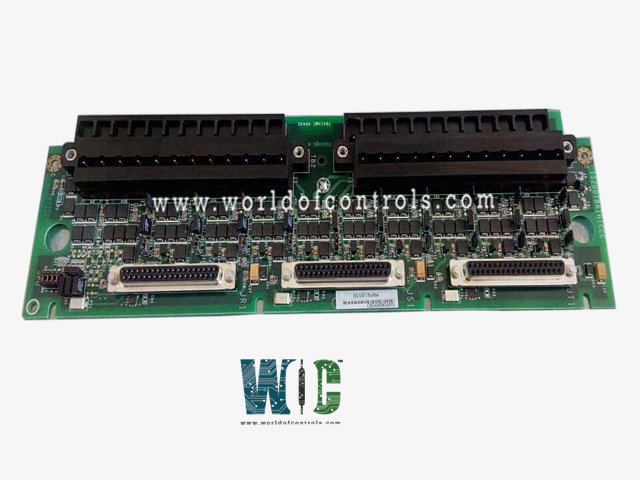
World Of Controls understands the criticality of your requirement and works towards reducing the lead time as much as possible.
IS200TBAIH1CDD - Analog Input Terminal Board is available in stock which ships the same day.
IS200TBAIH1CDD - Analog Input Terminal Board comes in UNUSED as well as REBUILT condition.
To avail our best deals for IS200TBAIH1CDD - Analog Input Terminal Board, contact us and we will get back to you within 24 hours.
SPECIFICATIONS:
Part Number: IS200TBAIH1CDD
Manufacturer: General Electric
Series: Mark VIe
Board Type: Analog Input Terminal Board
Number of Channels: 12
Input span, transmitters: 1-5 V dc
Input Voltage Range: 3.3V to 5V DC
Maximum lead Resistance: 15 maximum
Synchronization Accuracy: ±1 ns
Clock Frequency: Up to 200 MHz
Operating Temperature Range: 30°C to +65°C
Dimensions: 10.16 cm wide x 33.02 cm high
Mounting Type: Surface-mount technology (SMT)
Repair: 3-7 Day
Availability: In Stock
Country of Origin: United States
Manual: GEH6721D
FUNCTIONAL DESCRIPTION:
IS200TBAIH1CDD is an Analog Input Terminal Board manufactured and designed by General Electric as part of the Mark VIe Series used in GE Distribution Turbine Control Systems. The Analog Input terminal board supports 10 analog inputs and two analog outputs. The inputs can accommodate transmitters with two, three, or four wires, or use externally powered transmitters. The outputs are configurable for 0-20 mA or 0-200 mA current ranges. Both inputs and outputs feature noise suppression to protect against surges and high-frequency interference. The board has three DC-37 pin connectors for I/O processor connections, with simplex connections using a single connector (JR1) or TMR using all three. Connections can be made via cables or directly to the electronics. In TMR configurations, input signals are distributed to all three connectors corresponding to the R, S, and T controls. TMR outputs work by combining the currents from the three output drivers and measuring the total current via a shunt on the TBAI, which then provides this signal to the electronics for regulation according to the setpoint.
INSTALLATION:
The 10 inputs and two outputs are wired directly to two I/O terminal blocks mounted on the terminal board. Each block is held down with two screws and has 24 terminals accepting up to #12 AWG wires. A shield terminal attachment point is located adjacent to each terminal block. The types of analog inputs and outputs that can be accommodated are as follows:
OPERATION:
A 24 V dc power source is available on the terminal board for all the transducers. There is a choice of current or voltage inputs using jumpers. One of the two analog output circuits is 4-20 mA, and the other can be jumper configured for 4-20 mA or 0- 200 mA. The same terminal board can be used for TMR applications. Transmitter/transducers can either be powered by the control system's 24 V DC source or independently. Terminal board jumpers J#A, J#B, and JO configure the voltage and current input types, as well as select the current output type. Diagnostics monitor each output, and if a fault persists, a suicide relay in the I/O controller will disconnect the affected output if the processor is unable to clear the fault.
WOC has the largest stock of OEM replacement parts for GE Distribution Control Systems. We can also repair your faulty boards and supply unused and rebuilt boards backed up with a warranty. Our team of experts is available round the clock to support your OEM needs. Our team of experts at WOC is happy to assist you with any of your automation requirements. For pricing and availability on parts and repairs, kindly contact our team by phone or email.
How does the board handle noise interference?
The board features noise suppression circuitry to protect inputs and outputs from surges and high-frequency noise.
What connectors are available for I/O processor connections?
The board includes three DC-37 pin connectors, which can be used for simplex (JR1) or TMR connections.
What diagnostic features are available for monitoring outputs?
Each output is monitored by diagnostics, and a suicide relay will disconnect the output if a fault cannot be cleared by the processor.